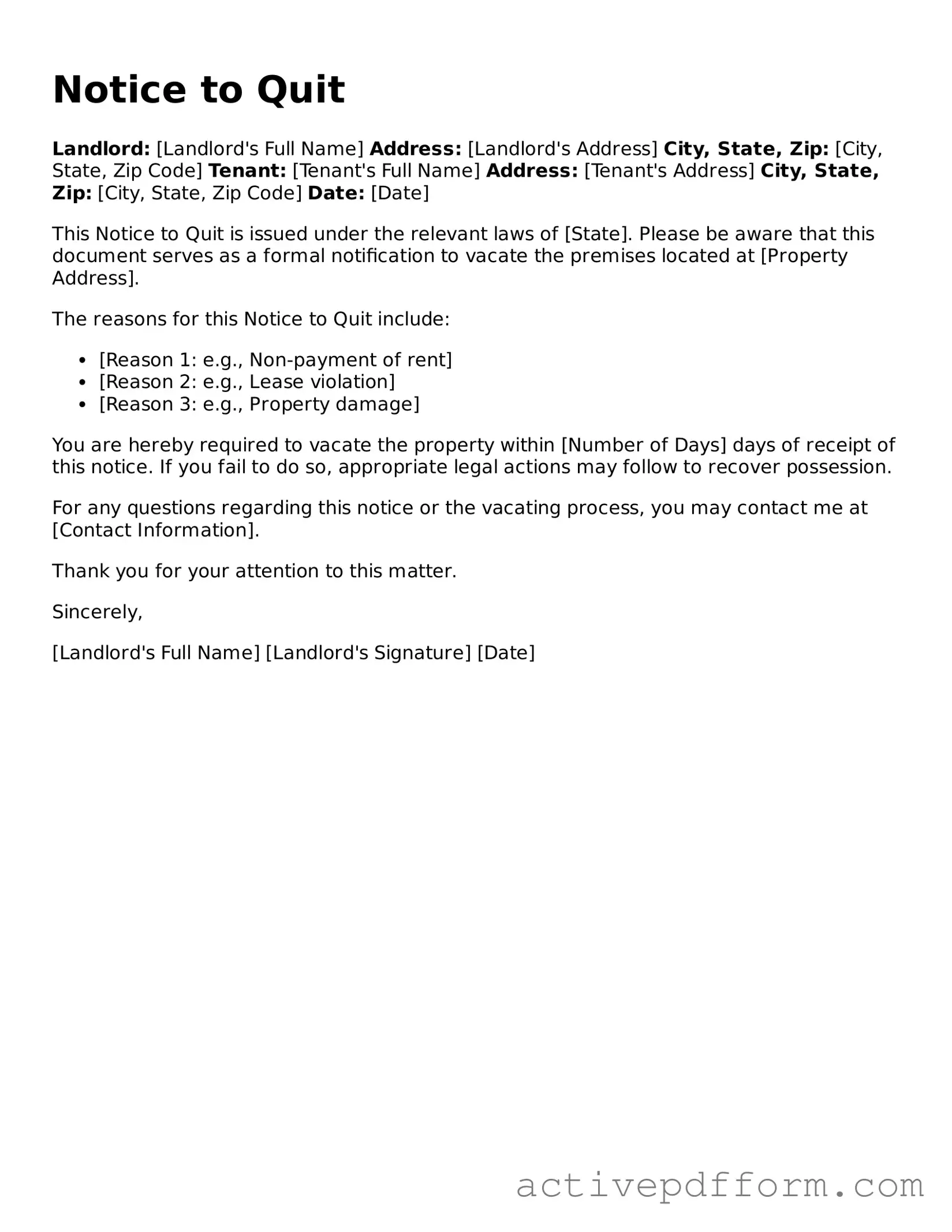What is a Notice to Quit form?
A Notice to Quit form is a legal document used by landlords to inform tenants that they must vacate the rental property. This notice typically outlines the reasons for eviction, such as failure to pay rent or violation of lease terms. It serves as a formal warning before further legal action is taken.
When should a landlord use a Notice to Quit?
A landlord should issue a Notice to Quit when a tenant has breached the lease agreement. Common reasons include non-payment of rent, illegal activity on the premises, or failure to maintain the property. It’s crucial to follow state-specific laws regarding the timing and delivery of this notice.
How long does a tenant have to respond to a Notice to Quit?
The response time can vary depending on state laws and the reason for the eviction. Generally, tenants are given a specific number of days to either rectify the issue or vacate the property. It’s essential for tenants to read the notice carefully and understand their rights and obligations.
Can a tenant contest a Notice to Quit?
Yes, tenants can contest a Notice to Quit. If they believe the notice is unjust or the reasons provided are inaccurate, they have the right to challenge it in court. This process often involves filing a formal response and may require legal assistance to navigate effectively.
What happens if a tenant does not comply with the Notice to Quit?
If a tenant fails to comply with the Notice to Quit, the landlord may proceed with legal action to evict the tenant. This often involves filing an eviction lawsuit, which can lead to a court hearing. Tenants should take these notices seriously and seek legal advice if needed.
Is a Notice to Quit the same as an eviction notice?
While a Notice to Quit is often the first step in the eviction process, it is not the same as an eviction notice. The Notice to Quit serves as a warning, while an eviction notice is a formal legal document issued after the tenant has failed to comply with the Notice to Quit.
Do I need a lawyer to complete a Notice to Quit?
While it’s not mandatory to have a lawyer to complete a Notice to Quit, consulting with one can be beneficial. A legal professional can ensure that the notice complies with local laws and regulations, helping to avoid potential issues down the line.
